This post may contain affiliate links. If you make a purchase through these links, we may earn a commission at no additional cost to you.
In this article, we spotlight the 10 best low-light indoor plants, each chosen for its ability to flourish with minimal sunshine while adding style and substance to your space. Low-light, in plant terms, means areas with just 100-200 lux of illumination—think dim corners, north-facing rooms, or spots far from windows where sunlight barely trickles in.
Not every home or office basks in bright rays, and that’s where these plants shine. They demand little yet deliver big: cleaner air, a touch of nature, and a mood boost, all without needing a sun-soaked spot.
These resilient green companions thrive in low-light environments—spaces with faint indirect light, like under fluorescent bulbs or near shaded windows—bringing life where other plants might fade. Whether you’re a busy professional with no time for fuss, a renter in a basement apartment, or someone who loves greenery but lacks bright rooms, these plants are your solution. They turn dim challenges into lush opportunities.
Top Ten Indoor Plants That Thrive in Low-Light Conditions
This curated list of 10 low-light indoor plants has something for everyone. Beginners will love the cast iron plant’s near-indestructible nature, while seasoned plant parents might enjoy the philodendron’s elegant sprawl. We’ve included care tips so you can keep them happy with minimal effort. Need a plant that signals thirst with drooping leaves? The peace lily’s your match. Want one that grows in water for a minimalist vibe? Lucky bamboo delivers.
From upright stunners to trailing beauties, these plants turn low-light into a green win. Ready to meet them?
1 | Snake Plant (Sansevieria trifasciata)

- Scientific Name: Sansevieria trifasciata (aka Dracaena trifasciata)
- Native Habitat: West Africa, from Nigeria to the Congo
- Growing Height: 1-3 feet indoors, varies by variety
- Leaf/Appearance: Long, upright, sword-like leaves with green-yellow variegation
- Growing & Care Tips: Water every 2-3 weeks when soil dries an inch down. Use well-draining cactus soil and a pot with drainage. Place in low to indirect light—avoid direct sun. Handles dry air; no misting needed. Propagate via leaf cuttings.
The snake plant stands tall as a low-light champ, its bold leaves shooting up like green swords edged with yellow. Compact varieties hit a foot, while others stretch to three, fitting tabletops or floors with ease. This West African native—also dubbed mother-in-law’s tongue—turns shadowy nooks into focal points, pairing sleek lines with modern decor. Its striking form grabs eyes in dim spaces, proving style thrives without sun.
This plant flourishes where others fade, thriving under fluorescent glow or faint natural light. It’s a top air purifier, tackling formaldehyde and benzene—perfect for stuffy offices or apartments. Its thick, fleshy leaves store water, making it drought-tolerant and forgiving of missed waterings. For travelers or busy folks, it stays loyal and low-drama, asking little while giving plenty.
Care stays effortless. Water sparingly every few weeks, using a well-draining mix to dodge overwatering risks. It adapts to dry air and dim spots like dark hallways, but direct sun scorches its patterns, so keep it shaded. Pests rarely bother it, and slow growth skips constant repotting. Slice a leaf to propagate—it roots fast in soil or water. Note: it’s toxic if chewed, so elevate it from pets.
The snake plant fuses substance with flair. Its upright habit resists spider mites and boosts air quality while needing minimal fuss. Stick it in a chic pot, and it greens up low-light zones with instant appeal. For newbies or collectors, it’s a hassle-free win—tough, striking, and built to last.
2 | ZZ Plant (Zamioculcas zamiifolia)
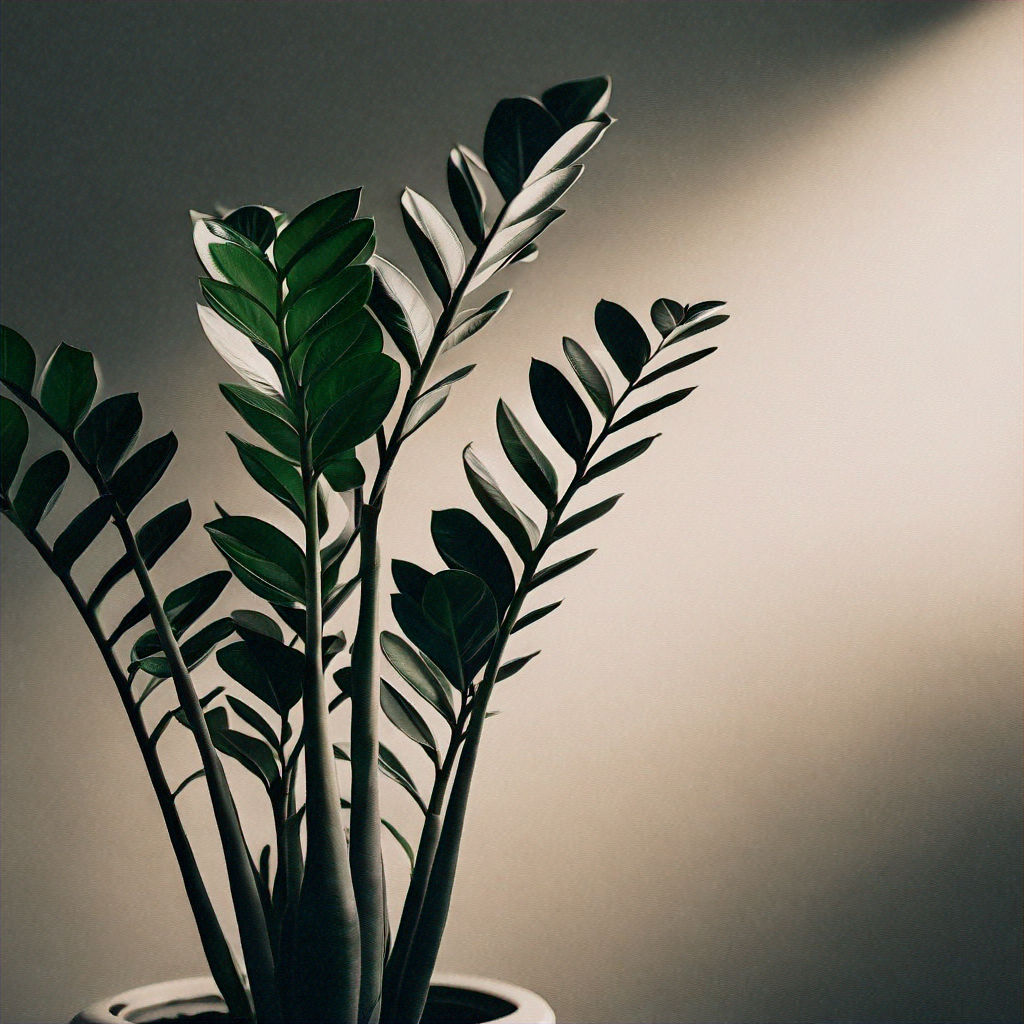
- Scientific Name: Zamioculcas zamiifolia
- Native Habitat: Eastern Africa, from Kenya to South Africa
- Growing Height: 2-3 feet indoors
- Leaf/Appearance: Glossy, dark green, feather-like leaves on thick stems
- Growing & Care Tips: Water every 3-4 weeks when soil dries completely. Use gritty, fast-draining succulent soil and a pot with drainage. Place in low to indirect light—avoid direct sun. Tolerates dry air; no misting needed. Propagate by stem cuttings in soil or water.
The ZZ plant gleams in dim corners with its glossy, dark green leaves, catching eyes like a polished gem. Smooth, feather-like fronds rise from sturdy stems, hitting two to three feet tall—ideal for desks or floors. Hailing from eastern Africa, this Zanzibar native adds lushness to light-starved spots, blending tropical flair with rugged survival skills. Its waxy shine turns shadowy spaces into lush showcases without breaking a sweat.
This plant mocks low light, thriving under fluorescent glow or scant rays. Its bulb-like rhizomes stash water, letting it endure month-long dry spells without a whimper. Forget to water? It won’t mind. That grit, plus its knack for shrugging off neglect, wins over busy folks or plant-care slackers. Some studies hint it clears pollutants like toluene, though it plays second fiddle to flashier purifiers. Still, it’s a tough, reliable pick for any dim room.
Care demands almost nothing. Water only when soil turns bone-dry—every few weeks—using a draining pot to dodge rhizome rot. It laughs at dry air, skipping humidifiers or mist. Tuck it in a basement or windowless bath; it holds strong, but direct sun yellows its sheen, so keep it shaded. Pests like aphids steer clear of its slick leaves, and slow growth means rare repotting. Snip a stem, callus it, and root it—new plants sprout fast.
Toxicity flags it for pet owners—stash it high if cats or kids nibble—but that’s its lone quirk. Its low-key vibe suits novices and pros alike, offering elegance with zero fuss. Pop it in a sleek pot, and it classes up dull spots while thriving on crumbs of care. For a low-light plant that pairs toughness with pretty, the ZZ plant delivers grit and gloss in spades.
3 | Pothos (Epipremnum aureum)
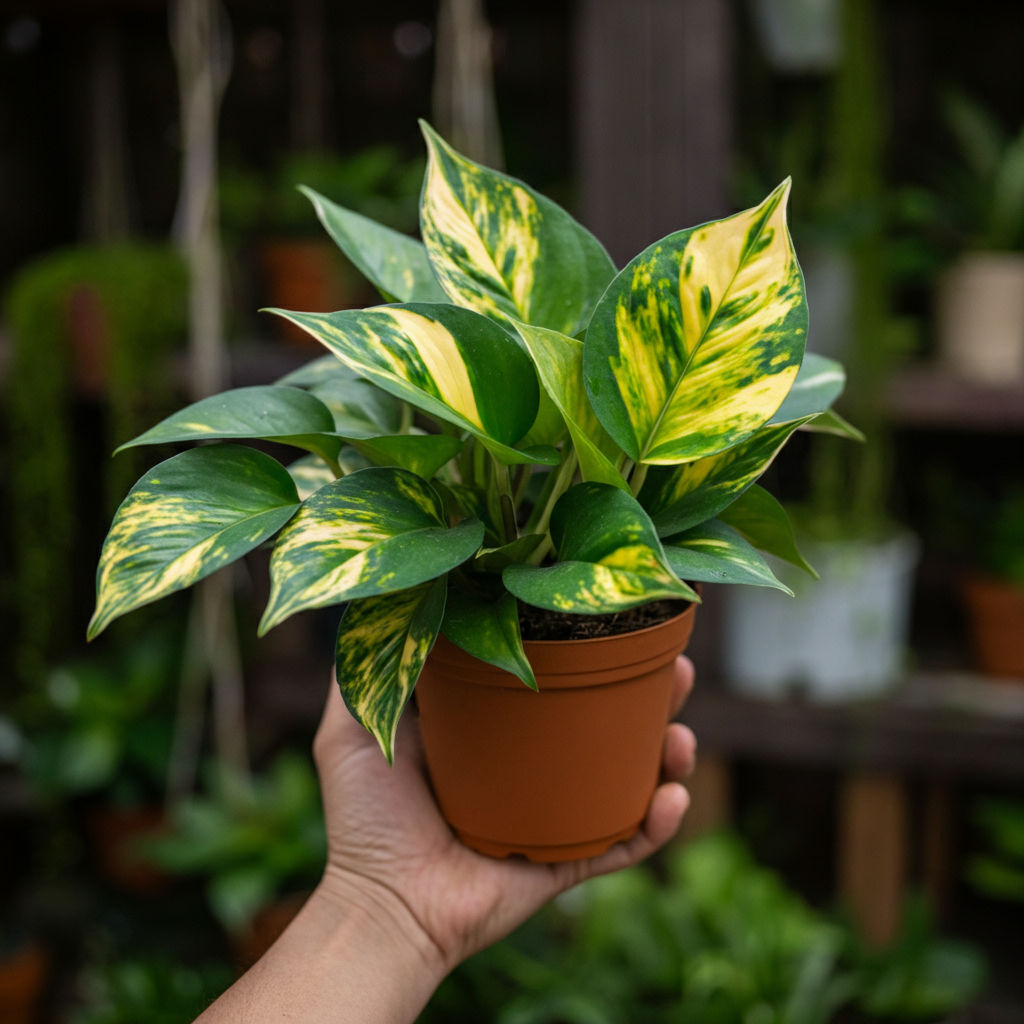
- Scientific Name: Epipremnum aureum
- Native Habitat: Southeast Asia, including Malaysia and Indonesia
- Growing Height: Up to 10 feet indoors (trailing or climbing)
- Leaf/Appearance: Heart-shaped, glossy leaves with green and yellow/white variegation
- Growing & Care Tips: Water every 1-2 weeks when top inch of soil dries. Use standard potting soil with drainage holes. Place in low to filtered light—avoid direct sun. Trim vines to shape; propagate cuttings in water. Mist in dry air if needed.
The pothos cascades into dim spaces with vibrant, trailing vines that spill like a green waterfall. Its heart-shaped leaves, splashed with creamy yellow or white, gleam with glossy life, stretching up to 10 feet indoors. This Southeast Asian native—often called devil’s ivy—drapes shelves or climbs with a nudge, softening hard edges with jungle energy. Perfect for hanging baskets or high perches, it brings lushness to low-light rooms fast.
This plant masters shade like a pro, flourishing in dark corners or under artificial glow. It keeps its color and vigor intact, forgiving missed waterings with a quick bounce-back. Unlike some peers, it skips air-purifying fame but wins with fast growth, filling bare spots in weeks. Its hardy nature suits plant lovers craving abundance without fuss—stick it in a softly lit den, and it thrives, no sun required.
Care stays simple and chill. Water when the top soil dries—every week or two—using a pot with holes to dodge soggy roots. It handles average humidity, but a mist perks it up in dry winters. Trim vines to shape it or snip cuttings—they root in water like a dream. Pests like spider mites rarely strike, and its pace balances fast growth with easy upkeep. Just keep it from harsh rays that bleach its variegation.
Toxicity flags it for pet owners—keep it high if chewers lurk—but that’s its only hitch. Propagation’s a snap: cut a vine, dunk it in water, and roots sprout quick. For beginners or pros, it delivers big impact with little work. Pair it with a bold pot, let it trail, and it turns desks or shelves into green showcases that grow with you.
The pothos reigns as a low-light MVP. Its flowing habit and forgiving soul make dim spaces lively, all while demanding next to nothing. For a plant that’s fast, full of charm, and thrives in the shadows, pothos blends ease with eye-catching life.
4 | Peace Lily (Spathiphyllum)
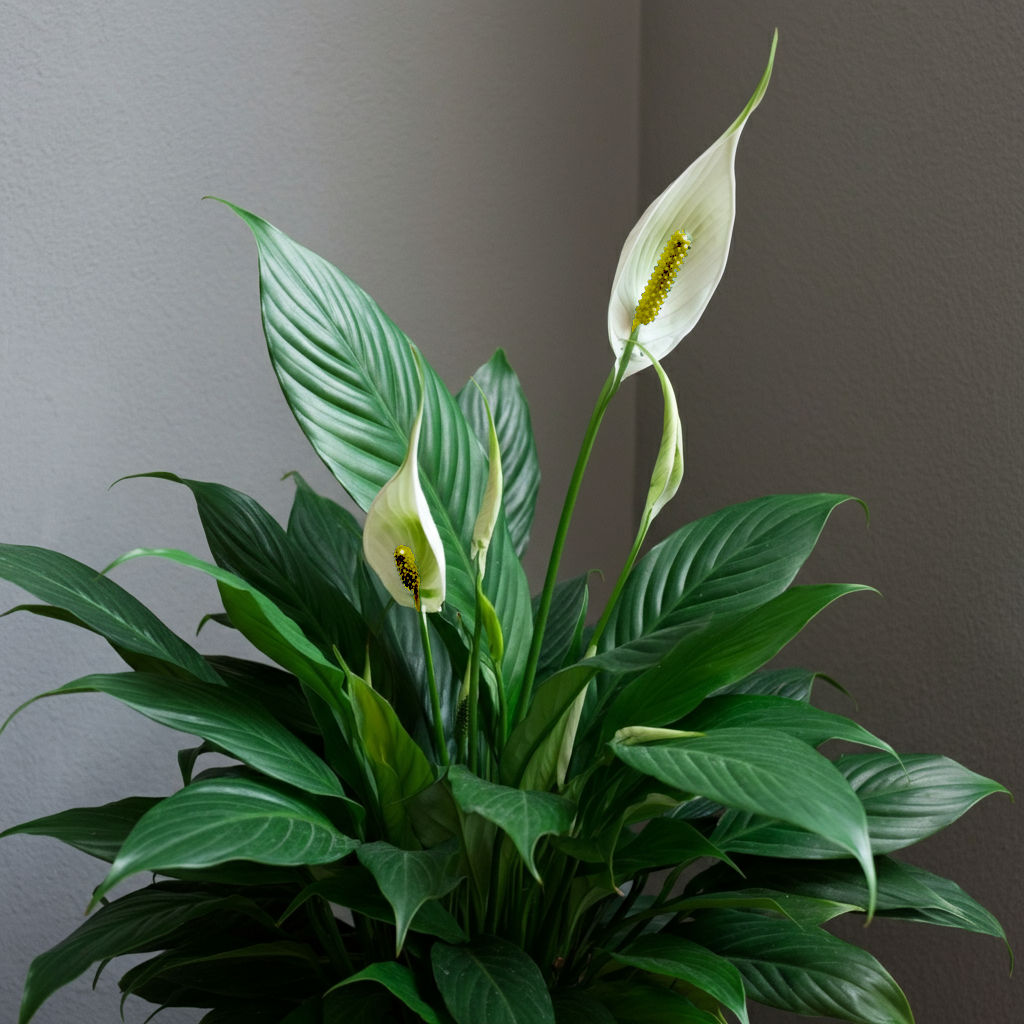
- Scientific Name: Spathiphyllum (species vary, e.g., S. wallisii)
- Native Habitat: Central and South American rainforests
- Growing Height: 1-2 feet indoors
- Leaf/Appearance: Glossy, lance-shaped dark green leaves with white, hooded blooms
- Growing & Care Tips: Water weekly when soil dries or leaves droop; keep moist. Use well-draining soil and a pot with holes. Place in low to soft light—avoid direct sun. Mist or use a pebble tray for humidity. Divide roots to propagate.
The peace lily graces dim spaces with elegant, dark green leaves and striking white blooms. Its glossy, lance-shaped foliage arches gently, crowned by hooded spathes on slender stalks, hitting one to two feet tall. This rainforest native—not a true lily—fits side tables or floors, blending serenity with drama in low-light rooms. Its blooms shine even in shade, adding a sophisticated touch to bathrooms or offices.
This plant rules the shadows, thriving away from windows or under soft artificial glow. Those white “flowers” (really bracts) droop when thirsty—a handy signal—while staying lush without sun, and the plant’s air-purifying chops, clearing ammonia and benzene, making it a functional beauty for stuffy spots. For anyone after grace and grit in dark corners, the peace lily stands out.
Care rewards a light touch. Water when leaves sag or soil dries—weekly works—keeping it moist but not soggy with a draining pot. It craves humidity, so mist it or use a pebble tray in dry air. Tuck it in a shady nook; direct sun burns its leaves and fades blooms. Wipe foliage to boost its shine, and it thrives with little fuss. Pests like aphids pop up rarely—soap upends them quick.
Growth stays moderate, needing a bigger pot every couple of years if roots tighten. Split it at the roots to propagate—two plants from one. It’s toxic if chewed, so keep it from pets or kids. Still, its responsiveness suits plant parents who like interaction, offering low-light prowess with personality. Set it in a sleek pot, and it sculpts a room effortlessly.
The peace lily fuses style with smarts. Its blooms lift moods, its air-cleaning works silently, and it thrives where light runs thin. For a low-maintenance plant that signals its needs, it delivers a perfect mix of charm and utility.
5 | Cast Iron Plant (Aspidistra elatior)
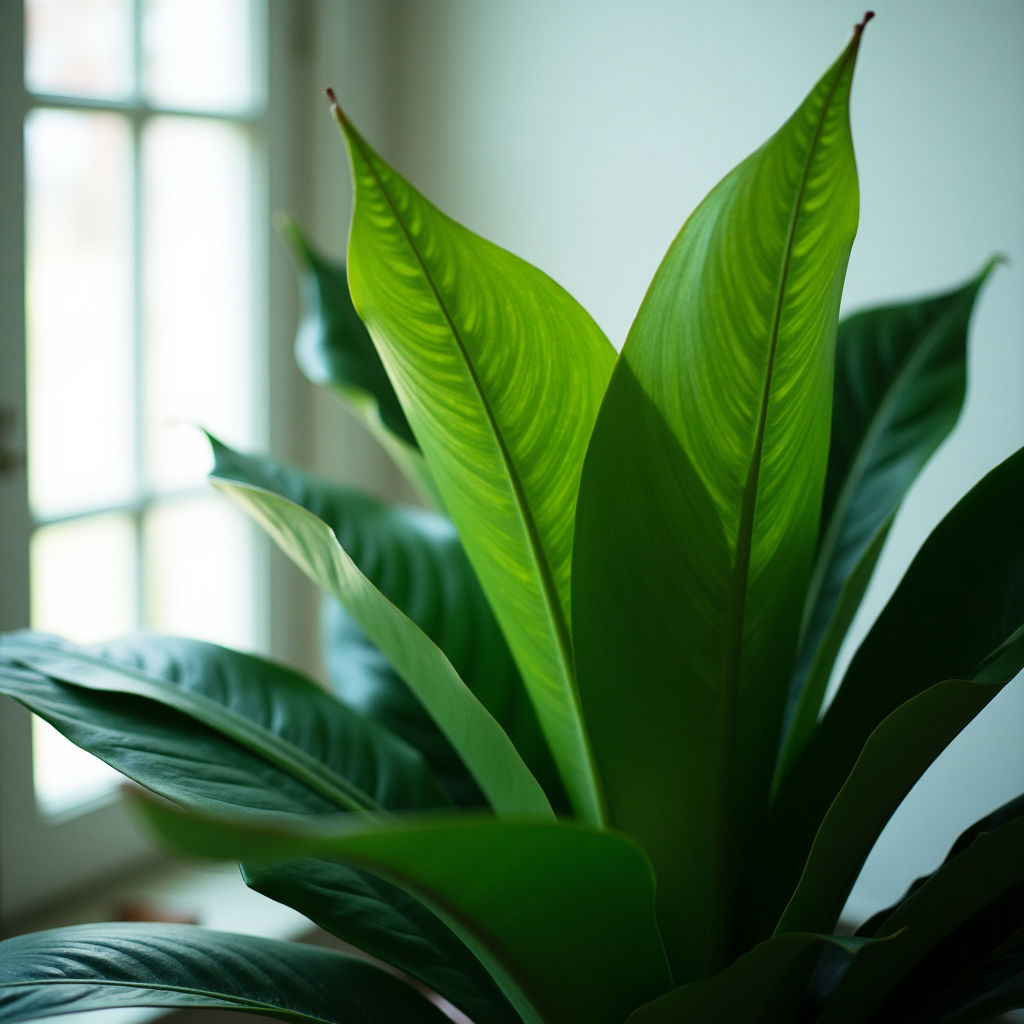
- Scientific Name: Aspidistra elatior
- Native Habitat: East Asia, including Japan and China
- Growing Height: Up to 2 feet indoors
- Leaf/Appearance: Long, narrow, deep green strap-like leaves
- Growing & Care Tips: Water every 2-3 weeks when soil dries an inch deep. Use well-draining soil and a pot with holes. Place in low light—avoid direct sun. No misting needed; tolerates dry air. Divide roots to propagate.
The cast iron plant lives up to its name with rugged charm, its deep green, strap-like leaves rising straight from the soil. Forming a dense clump up to two feet tall, this East Asian native—once a Victorian tavern star—suits corners or entryways. Its simple, upright form brings quiet toughness to modern spaces, shining in low-light spots where others falter.
This plant brushes off darkness like dust. It prospers in basements, hallways, or tiny-windowed rooms, thriving where light barely reaches. Neglect doesn’t faze it—erratic watering, dusty air, even chilly 50°F dips leave it unfazed. Skipping blooms for evergreen grit, it grows slow and steady, perfect for set-it-and-forget-it fans. It won’t outgrow its spot, offering reliability over flash.
Care takes almost no work. Water sparingly when soil dries an inch down—every few weeks—using a draining pot to keep roots happy. It shrugs off dry air, skipping misting or humidity tricks. Tuck it in low light or near a north window; direct sun yellows its leaves, so shade it. Dust the foliage occasionally, and it stays sharp. Its leathery leaves repel pests like spider mites, and slow growth means repotting’s rare.
Propagation’s easy—divide the root ball during a repot, and replant. It’s non-toxic to pets and kids, a rare perk, making it a safe, sturdy pick. Patience is key; it creeps along, but that’s its low-maintenance charm. For a plant that endures neglect and gloomiest corners, it proves tough can still captivate.
The cast iron plant anchors spaces with no-fuss greenery. Its subtle strength fills dim spots without fanfare, thriving on minimal care. Pop it in a plain pot, and it stands firm—a quiet win for anyone seeking durability and pet-friendly ease.
6 | Spider Plant (Chlorophytum comosum)
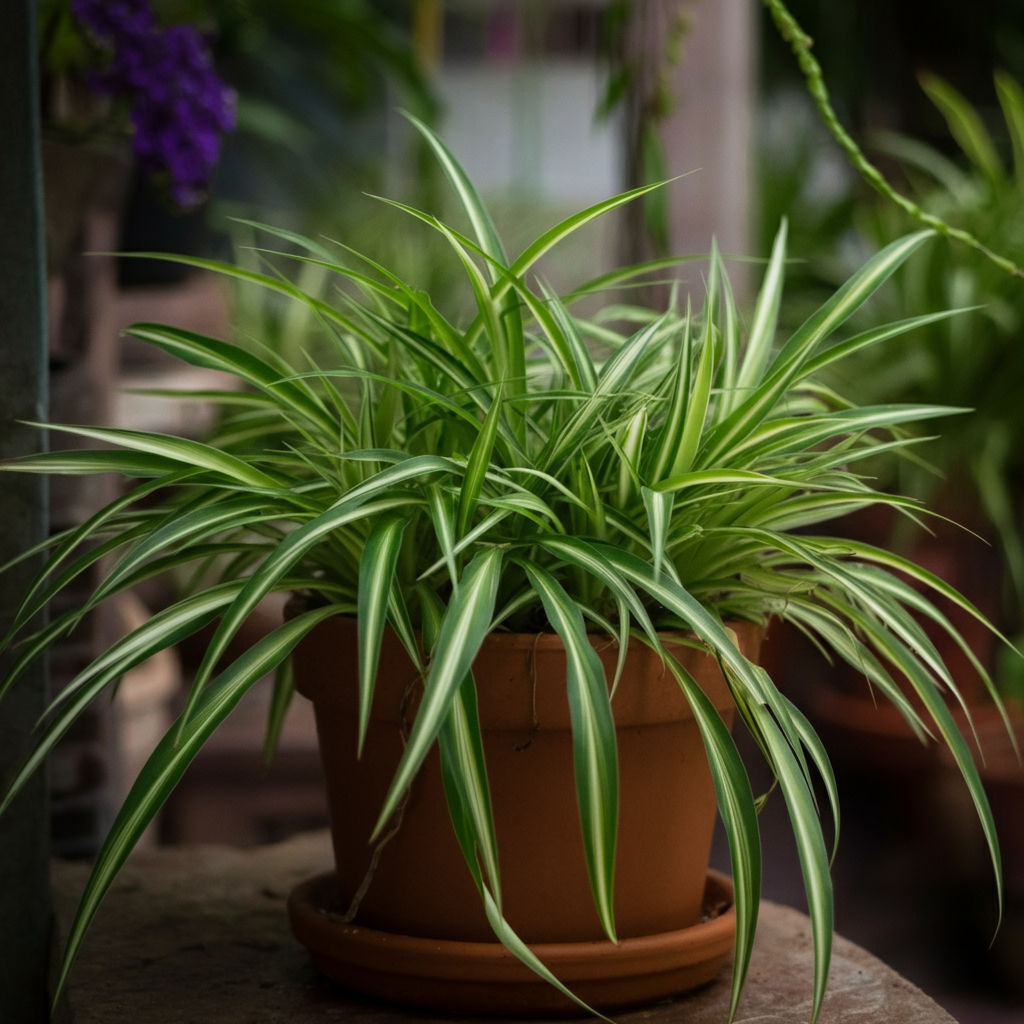
- Scientific Name: Chlorophytum comosum
- Native Habitat: Southern and Western Africa
- Growing Height: Up to 2 feet wide (including trailers)
- Leaf/Appearance: Long, arching, grass-like leaves, green or white-striped, with plantlets
- Growing & Care Tips: Water weekly; let top inch of soil dry. Use standard soil with drainage. Place in low to moderate light—avoid harsh sun. Mist for humidity in dry air. Propagate by rooting plantlets in water or soil.
The spider plant dangles into dim spaces with arching, grass-like leaves and playful baby plantlets. Its slender blades—green or striped with white—spill from a rosette, sprouting tiny flowers and offshoots that hang like spiders on threads. This South African native hits two feet wide with trailers, perfect for shelves or hanging baskets. It adds a lively, cascading flair to low-light spots with effortless charm.
This plant strides through shade, thriving under artificial light or near north-facing windows. Its stripes stay vivid, plantlets plentiful, even in dim rooms. It’s a top air purifier, scrubbing formaldehyde and carbon monoxide—great for stuffy homes. It forgives missed waterings, perking up fast, and shines for pet owners: non-toxic to cats and dogs, a safe win over toxic peers.
Care feels simple and fun. Water weekly, letting soil dry an inch down—use a draining pot to dodge soggy roots. It loves a humidity boost, so mist it in winter or group it with pals. Set it in low to moderate light; harsh sun browns tips, but shadows won’t dull it. Pinch dead ends or snip plantlets—they root quick in water or soil for extras.
Pests like aphids might peek in, but a rinse or soap sends them off. It grows steadily, needing a bigger pot every few years if roots show. Those plantlets make sharing a breeze—clip, gift, or grow more. Its pet-safe, adaptable vibe suits beginners or hands-on fans, blending function with a quirky edge in low light.
The spider plant sparks dim corners with sprightly energy. Its arching leaves and dangling babies craft a dynamic display, quietly cleaning air on the side. Hang it in macramé or perch it high—it transforms spots with ease. For a low-maintenance, propagable pick with personality, it swings in strong.
7 | Philodendron (Heartleaf variety)
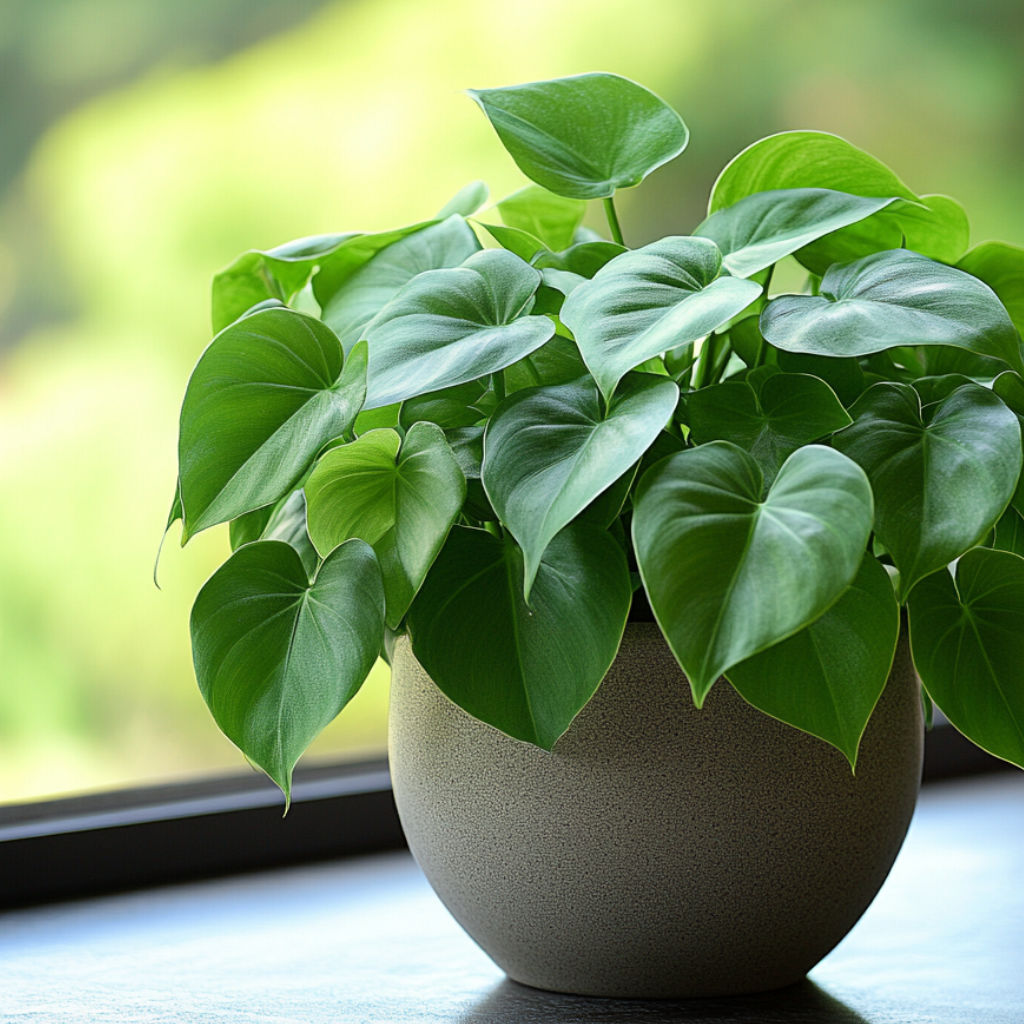
- Scientific Name: Philodendron hederaceum
- Native Habitat: Central America and the Caribbean
- Growing Height: Up to 10 feet indoors (trailing or climbing)
- Leaf/Appearance: Glossy, emerald-green, heart-shaped leaves on vines
- Growing & Care Tips: Water every 1-2 weeks when top inch of soil dries. Use standard potting mix with drainage. Place in low to soft light—avoid direct sun. Mist for humidity if dry. Propagate by rooting cuttings in water or soil.
The heartleaf philodendron trails into dim spaces with charming, heart-shaped leaves that spill like a green cascade. Its glossy, emerald foliage stretches up to 10 feet, draping shelves or climbing with support. This Central American native—often just “philo”—lends a lush, tropical feel to low-light rooms, its velvety leaves catching faint glow with quiet grace. Perfect for softening corners, it weaves a romantic vibe effortlessly.
This plant adores shade, thriving in dark nooks or under soft artificial light. It holds its rich color without fuss, growing steadily even if you skip a watering—it bounces back like a champ. While it skips air-purifying fame, its strength shines in aesthetics and ease, filling bare spots with a full, green flow. For anyone craving a low-light plant with lush charm, it’s a perfect match.
Care takes little effort. Water when the top soil dries—every week or two—using a draining pot. It handles average humidity, but a light mist plumps leaves in dry air. Trim vines to shape or snip cuttings—they root fast in water or soil. Tuck it in a shaded spot; direct sun scorches its delicate foliage, so keep it soft-lit. Pests like mealybugs might peek in—a soapy wipe fixes that quick.
Growth hums at a moderate pace, needing a repot every few years if roots crowd. It’s toxic, so stash it high from nibbling pets or kids—its only quirk. Still, its laid-back nature suits novices and pros, offering big impact with small work. Pair it with a chic pot or moss pole, and it turns dull spaces into green retreats that thrive on minimal care.
The philodendron oozes easy allure. Its trailing vines soften rooms with tender elegance, weaving a lush spell in low light. For a plant that’s pliable, pretty, and fuss-free, it delivers tropical charm with every leaf.
8 | Chinese Evergreen (Aglaonema)
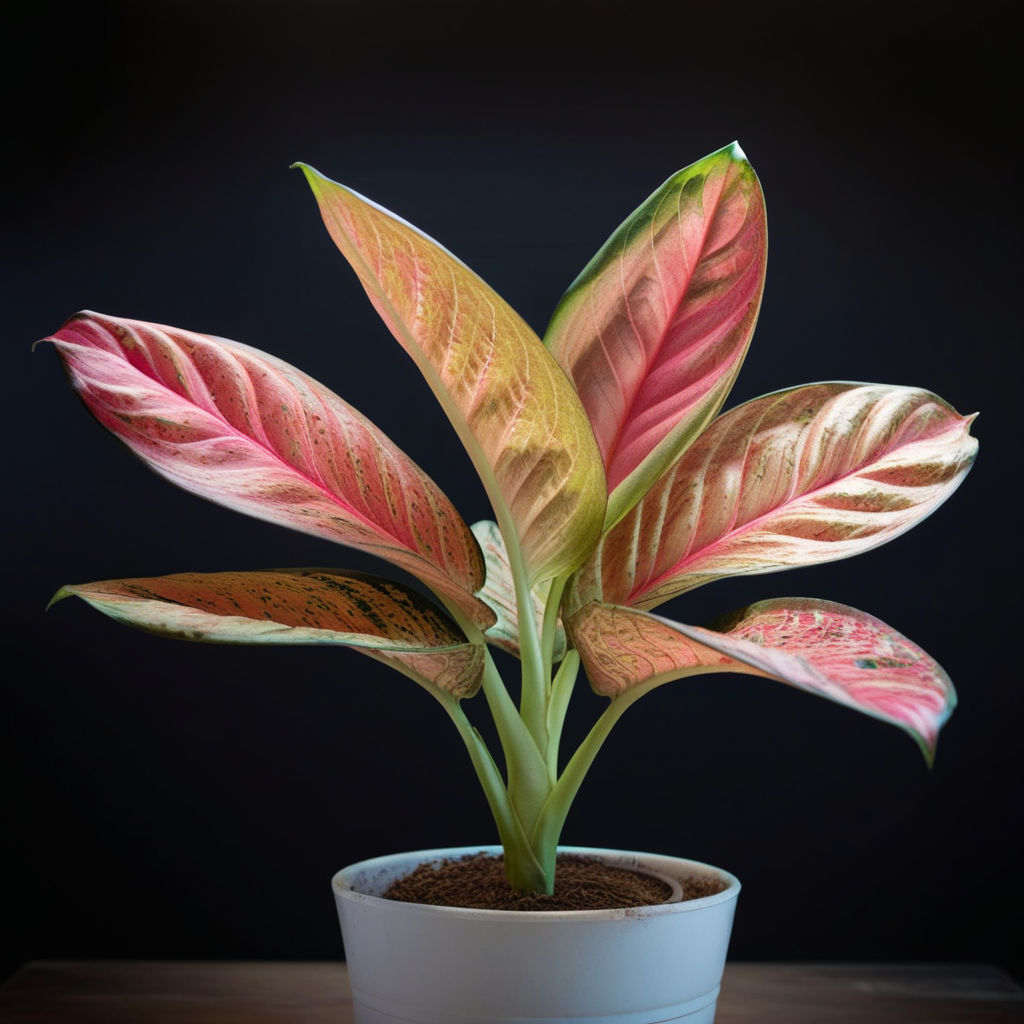
- Scientific Name: Aglaonema (species vary, e.g., A. commutatum)
- Native Habitat: Southeast Asia, including Thailand and Philippines
- Growing Height: Up to 2 feet tall and wide indoors
- Leaf/Appearance: Broad, oval leaves with green, silver, pink, or cream variegation
- Growing & Care Tips: Water every 1-2 weeks when top inch of soil dries. Use well-draining mix with drainage holes. Place in low to soft light—avoid direct sun. Mist for humidity. Propagate by stem cuttings in water or soil.
The Chinese evergreen brightens dim spaces with vibrant, variegated leaves that splash color like a painter’s brush. Its broad, oval foliage—green mixed with silver, pink, or cream—forms a bushy clump up to two feet tall and wide. This Southeast Asian native suits tabletops or floors, adding a bold pop to low-light rooms. Its lush, upright habit stands out where plain greens fade.
This plant dances in low light, prospering under fluorescent bulbs or in shaded nooks. It keeps patterns vivid without sun, shrugging off dry spells and irregular care with a quick drink. For anyone craving color in dark spots without finicky upkeep, it’s a forgiving, eye-catching gem that thrives effortlessly.
Care stays low-key. Water when the top soil dries—every week or two—using a draining pot. It likes humidity, so mist it or use a humidifier in dry months. Set it in a dim corner; direct sun bleaches its hues, so keep it shaded. Wipe leaves to clear dust—those patterns deserve to shine. Pests like spider mites might nibble—a soapy rinse fixes that fast.
Growth creeps slow, needing a repot every few years when roots snug up. Propagation’s a breeze—cut a stem, root it in water or soil, and it takes. It’s toxic if chewed, so stash it from pets or kids. Still, its hardy chill suits beginners or busy folks, blending style with ease. Pop it in a bold pot, and it lifts gloomy spots with flair.
The Chinese evergreen fuses toughness with punch. Its variegated leaves turn shadows lively, thriving where light and care run thin. For a compact, colorful, carefree pick, it delivers personality in spades.
9 | Lucky Bamboo (Dracaena sanderiana)
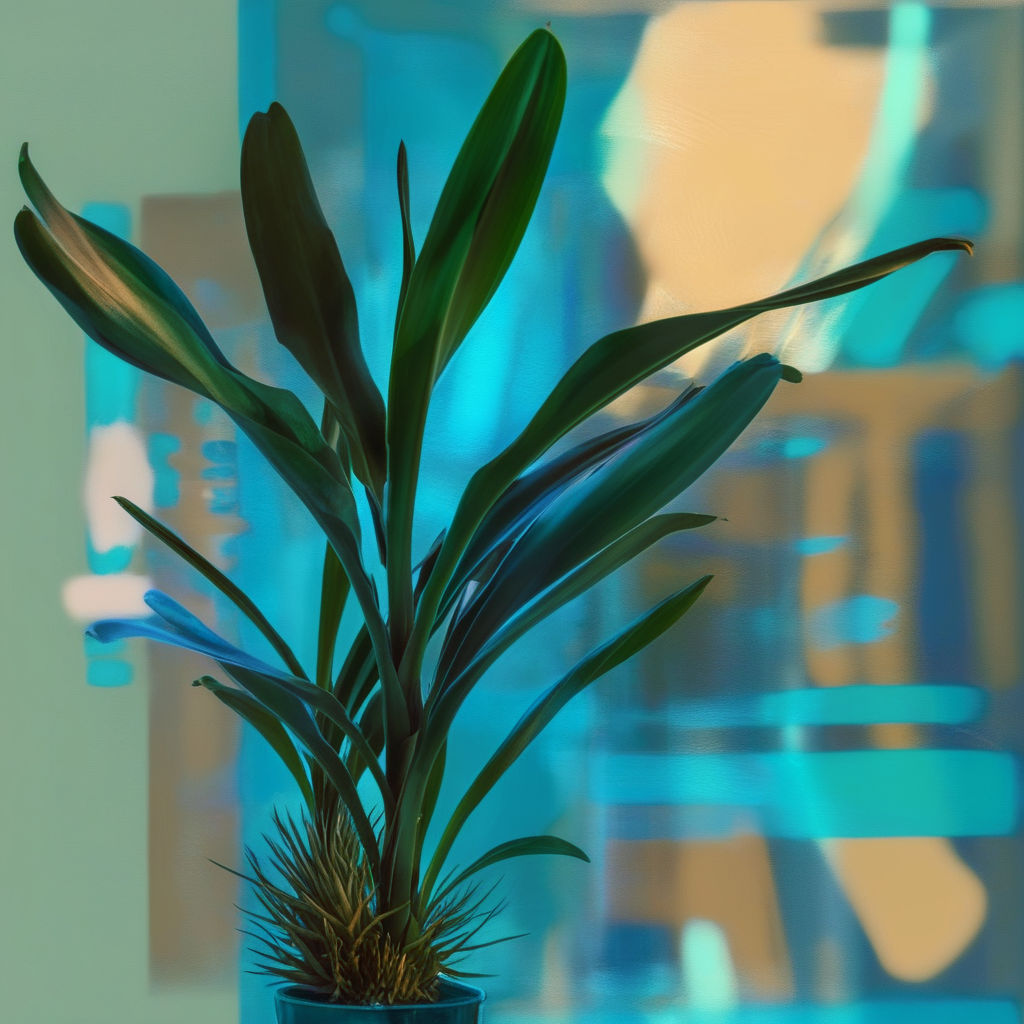
- Scientific Name: Dracaena sanderiana
- Native Habitat: Southeast Asia, including Cameroon and tropical West Africa
- Growing Height: 6 inches to 2 feet indoors
- Leaf/Appearance: Slender, bamboo-like stalks with bright green, narrow leaf tufts
- Growing & Care Tips: In water, use distilled, swap weekly with pebbles; in soil, water when top dries, use well-draining mix. Place in low, indirect light—avoid sun. Trim yellow shoots. Propagate by cutting stalks above nodes.
The lucky bamboo twists into dim spaces with slender, upright stalks and bright green shoots. Its smooth, bamboo-like stems—straight, spiraled, or braided—rise from a few inches to two feet, topped with narrow leaf tufts in artful tiers. This Southeast Asian dracaena (not true bamboo) thrives in water or soil, fitting vases or pots. Its minimalist, zen-like look calms desks or shadowy shelves with quirky charm.
This plant breezes through low light, flourishing under artificial glow or in windowless nooks. It keeps its vivid green without fuss, shrugging off shade with ease. Feng shui fans tout it for good vibes—two stalks for love, three for joy—though science skips the lore. Its water-growing knack sets it apart; dunk its base in liquid, and it thrives where others sulk, bending rules for low-light lovers.
Care stays simple and versatile. In water, use distilled, swap it weekly, and add pebbles for stability. In soil, water when the top dries, using a draining mix. It loves warmth and dim spots—direct sun yellows leaves, so keep it shaded. Trim yellow shoots to keep it neat; new growth pops up fast. No misting needed—it handles average humidity like a pro.
Pests rarely hit its sleek stems, but stale water risks root rot—stay fresh. It grows slow, skipping repots unless you upscale for style. Propagation’s a cinch—cut above a node, root in water, and go. It’s toxic if chewed, so stash it from pets or kids. Still, its low-maintenance edge suits busy folks or decor fans craving luck with little work.
The lucky bamboo blends serenity with flair. Its sculptural stalks turn dull spots tranquil, thriving where light runs low. Pair it with a glass vase or rocks, and it doubles as growing art. For an unconventional, calming, easy pick, it twists green living into something fresh.
10 | Parlor Palm (Chamaedorea elegans)
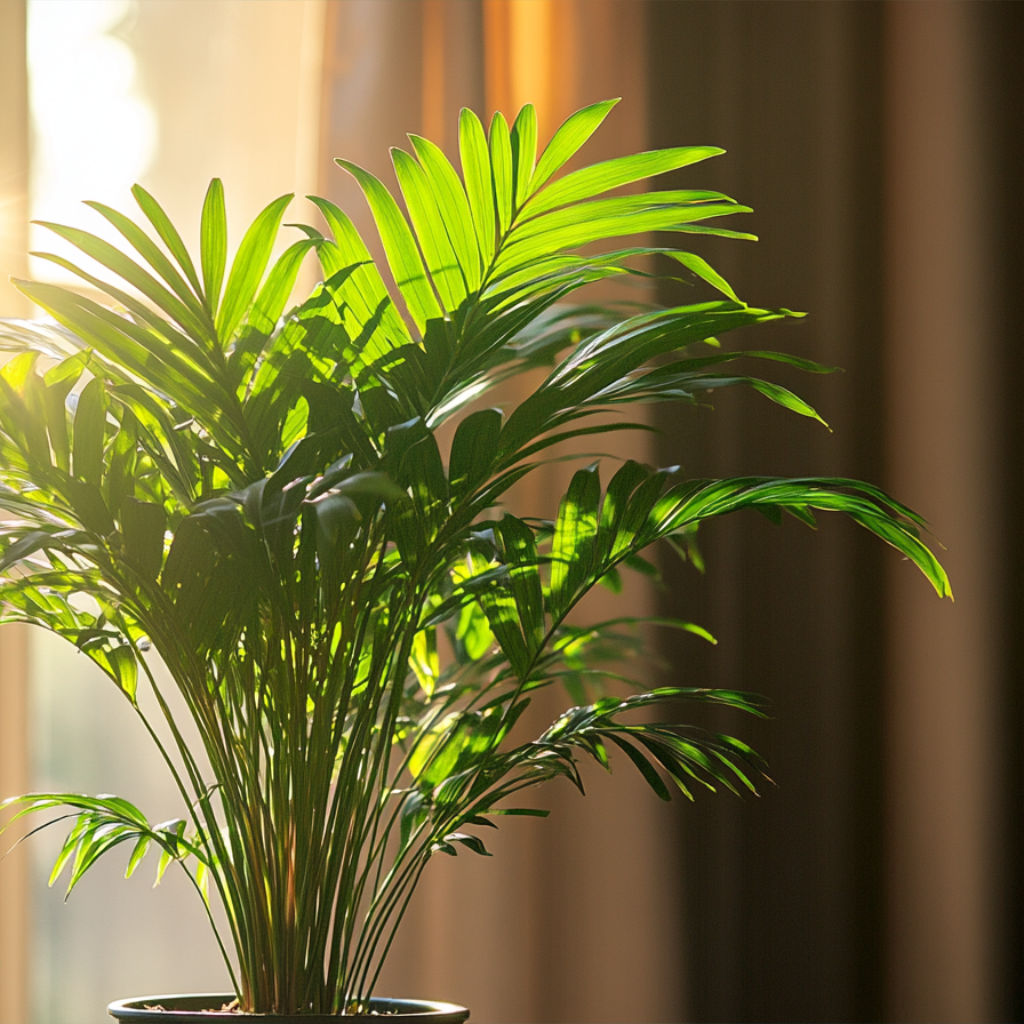
- Scientific Name: Chamaedorea elegans
- Native Habitat: Central American rainforests, including Mexico and Guatemala
- Growing Height: 3-4 feet indoors
- Leaf/Appearance: Soft, light-green, feathery fronds on slender stems
- Growing & Care Tips: Water every 1-2 weeks when top inch of soil dries; keep moist. Use peat-based mix with drainage. Place in low to soft light—avoid direct sun. Mist weekly for humidity. Propagate via seeds (slow).
The parlor palm sways into dim spaces with feathery, arching fronds that fan out in soft, light-green waves. Growing to three or four feet, its slender, bamboo-like stems form a compact cluster, perfect for tabletops or corners. This Central American native—aka Neanthe bella—channels a Victorian vibe, adding tropical elegance to low-light rooms. Its airy silhouette softens spaces with understated grace.
This plant excels where light fades, flourishing in shaded nooks or under artificial bulbs. It keeps its lush look near north-facing windows, skipping browning with ease. Slow and steady, it avoids rapid growth spurts, suiting small spots or busy owners. While it lacks air-purifying fame, its fine fronds lift stuffy rooms with breezy charm. For a touch of tropics in low light, it delivers without drama.
Care feels gentle and light. Water when the top soil dries—every week or two—using a draining, peat-rich pot to keep it moist, not soggy. It craves humidity, so mist fronds or use a pebble tray in dry air. Set it in a dim area; direct sun scorches its tender leaves, so shade reigns. Trim brown tips to tidy it—new growth fills in slow but sure.
Pests like spider mites might sneak in dry conditions—a rinse or neem oil fixes that. It creeps along, needing a repot every few years when roots snug up. Propagation leans on seeds—slow and tricky—so most keep one plant. It’s non-toxic to pets and kids, a household perk, offering chill elegance for anyone. Its easy routine fits those after refined greenery.
The parlor palm whispers sophistication. Its feathery dance turns plain spots into retreats, thriving where light runs thin. Nestle it in a ceramic pot for timeless appeal—a dainty, pet-friendly escape in the shadows.
Comparison Table: 10 Best Indoor Plants for Low Light
|
Plant |
Light Tolerance |
Water Needs |
Mature Height |
Pet Safe |
Air Purifying |
Humidity Needs |
Growth Rate |
|---|---|---|---|---|---|---|---|
|
Snake Plant |
Excellent |
Low (2-3 weeks) |
1-3 ft |
No |
Yes |
Low (dry OK) |
Slow |
|
ZZ Plant |
Excellent |
Very Low (3-4 weeks) |
2-3 ft |
No |
Yes |
Low (dry OK) |
Slow |
|
Pothos |
Very Good |
Moderate (1-2 weeks) |
Up to 10 ft |
No |
No |
Moderate (mist OK) |
Fast |
|
Peace Lily |
Very Good |
Moderate (weekly) |
1-2 ft |
No |
Yes |
High (mist/tray) |
Moderate |
|
Cast Iron Plant |
Excellent |
Low (2-3 weeks) |
Up to 2 ft |
Yes |
No |
Low (dry OK) |
Very Slow |
|
Spider Plant |
Very Good |
Moderate (weekly) |
Up to 2 ft |
Yes |
Yes |
Moderate (mist OK) |
Moderate |
|
Philodendron |
Very Good |
Moderate (1-2 weeks) |
Up to 10 ft |
No |
No |
Moderate (mist OK) |
Moderate |
|
Chinese Evergreen |
Very Good |
Moderate (1-2 weeks) |
Up to 2 ft |
No |
Yes (mild) |
Moderate (mist OK) |
Slow |
|
Lucky Bamboo |
Very Good |
Moderate (weekly)* |
6 in-2 ft |
No |
No |
Low (average OK) |
Slow |
|
Parlor Palm |
Very Good |
Moderate (1-2 weeks) |
3-4 ft |
Yes |
No |
High (mist/tray) |
Very Slow |
Notes:
- *Lucky Bamboo water needs assume soil; in water, it’s “weekly swap.”
- Light Tolerance: “Excellent” = thrives in deep shade; “Very Good” = prefers low but tolerates some indirect light.
- Humidity Needs: “Low” = tolerates dry air; “Moderate” = benefits from occasional misting; “High” = needs misting or trays.
- Growth Rate: “Very Slow” = years to size up; “Slow” = gradual; “Moderate” = steady; “Fast” = quick expansion.
- Data aligns with profiles (e.g., Peace Lily’s “mist or pebble tray” = High humidity; ZZ Plant’s “no misting” = Low).
Why Indoor Plants Are Worth It
Indoor plants bring more than just greenery—they transform spaces and lives. Studies, like those from the Journal of Environmental Psychology, show plants cut stress by 37% and sharpen focus, making them allies for work-from-home setups or cozy apartments. Many, like our snake plant and peace lily, filter toxins—think formaldehyde from furniture—breathing cleaner air into your home. Visually, they soften stark rooms; a pothos trailing over a shelf or a ZZ plant on a desk adds life where it’s needed most.
Low-light plants make this magic accessible anywhere. No sunny windows? No problem. These champs thrive in dim corners or under artificial light, dodging the “I don’t have enough sun” excuse. They’re low-maintenance too—perfect for busy folks or plant newbies. Horticulturists praise their resilience, noting they turn neglected spots into thriving nooks. Whether you seek calm, cleaner air, or a touch of nature, these plants deliver, proving their worth in any home, sun or not.
Breaking the Low-Light Barrier: How Plants Enhance Life
Low light doesn’t mean lifeless rooms—plants shatter that barrier with ease. Our 10, from the cast iron plant’s grit to the spider plant’s charm, thrive where sun can’t reach, like basements, hallways, or windowless offices. This adaptability flips a challenge into a win, letting you green up spaces once written off. Imagine a lucky bamboo on a dim desk, sparking zen during a hectic day, or a parlor palm softening a shadowy corner—suddenly, “too dark” becomes “just right.”
They enhance life in quiet, powerful ways. A Chinese evergreen’s variegated leaves lift a gloomy mood; a peace lily’s blooms signal care amidst chaos. Research backs their boost—plants in low-light workspaces cut fatigue by 20%, per a University of Technology Sydney study. Pet-safe picks like the spider plant fit families, while air-purifiers like the ZZ plant freshen stale air. Check the table to match one to your needs—slow-growers for small spots, fast vines for drama—and watch life bloom where light runs thin. Barriers be gone—plants make it better.
Conclusion
Low-light indoor plants turn dim spaces into green sanctuaries, and these 10 prove sun isn’t a must. From snake plant’s air-scrubbing swords to parlor palm’s feathery grace, each thrives in shadows—north-facing rooms, far from windows, or under LED glow. Profiles detail their habitats, heights, and care, showing how they blend toughness with charm. They shrug off neglect, purify air, and lift moods, fitting busy lives or small spaces with ease.
These plants don’t just endure—they enhance. Variegated leaves brighten corners, trailing vines soften edges, and upright forms anchor rooms. Their care—minimal water, a shaded spot, a warm nook—keeps things simple. Beginners love the cast iron plant’s grit; pros adore the philodendron’s flow.
Want more variety? Try these bonus picks:
- Boston Fern (Nephrolepis exaltata): Feathery fronds from North America hit 2-3 feet, loving humidity and low light—mist it often.
- Monstera (Monstera deliciosa): Swiss-cheese leaves from Central America stretch 1-3 feet indoors, trailing or climbing in shade—water sparingly.
- Prayer Plant (Maranta leuconeura): Patterned leaves from Brazil fold up at night, growing to 1 foot—keep it moist and dim.
Pick one based on your vibe—cascading, compact, or colorful—and watch it thrive. Start small or mix them up—cluster pots or let one shine solo. Test their limits in deeper shade or propagate extras to share.
Grab a pot and plant your favorite where light runs low. They’ll grow, clean your air, and calm your space, proving shadows breed beauty. Go for a classic from our 10 or a bonus gem—your indoor jungle starts now.

